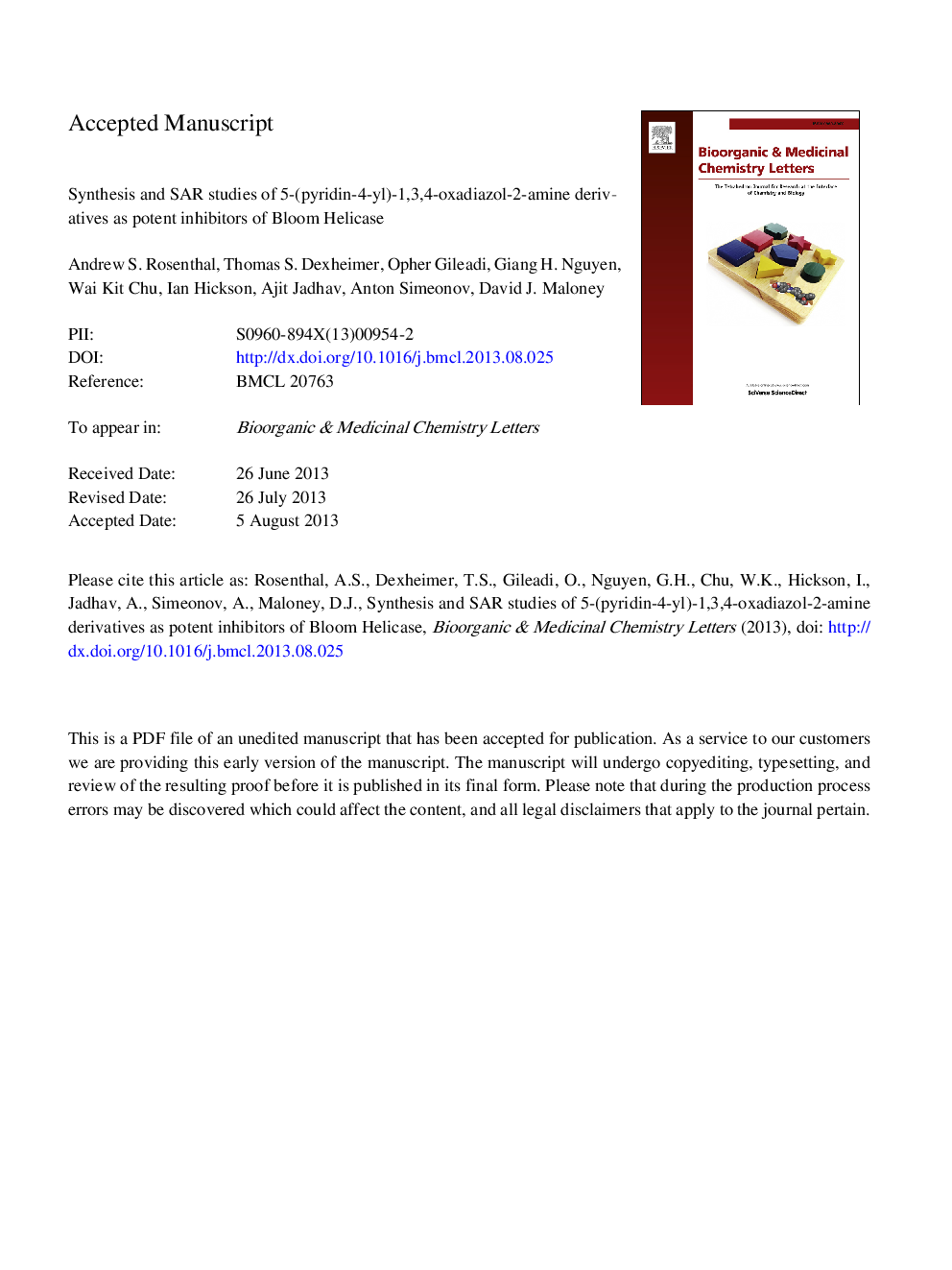| Article ID | Journal | Published Year | Pages | File Type |
|---|---|---|---|---|
| 10587626 | Bioorganic & Medicinal Chemistry Letters | 2013 | 21 Pages |
Abstract
Human cells utilize a variety of complex DNA repair mechanisms in order to combat constant mutagenic and cytotoxic threats from both exogenous and endogenous sources. The RecQ family of DNA helicases, which includes Bloom helicase (BLM), plays an important function in DNA repair by unwinding complementary strands of duplex DNA as well as atypical DNA structures such as Holliday junctions. Mutations of the BLM gene can result in Bloom syndrome, an autosomal recessive disorder associated with cancer predisposition. BLM-deficient cells exhibit increased sensitivity to DNA damaging agents indicating that a selective BLM inhibitor could be useful in potentiating the anticancer activity of these agents. In this work, we describe the medicinal chemistry optimization of the hit molecule following a quantitative high-throughput screen of >355,000 compounds. These efforts lead to the identification of ML216 and related analogs, which possess potent BLM inhibition and exhibit selectivity over related helicases. Moreover, these compounds demonstrated cellular activity by inducing sister chromatid exchanges, a hallmark of Bloom syndrome.
Keywords
PBSMLMBLMNADPHADMESCEHTSSARDMFInhibitorsister chromatid exchangesabsorption, distribution, metabolism and excretiondimethylformamideStructure activity relationshipBloom syndromeHigh throughput screenPhosphate buffered salineSmall moleculemouse liver microsomesHomologous recombinationnicotinamide adenine dinucleotide phosphate
Related Topics
Physical Sciences and Engineering
Chemistry
Organic Chemistry
Authors
Andrew S. Rosenthal, Thomas S. Dexheimer, Opher Gileadi, Giang H. Nguyen, Wai Kit Chu, Ian D. Hickson, Ajit Jadhav, Anton Simeonov, David J. Maloney,
